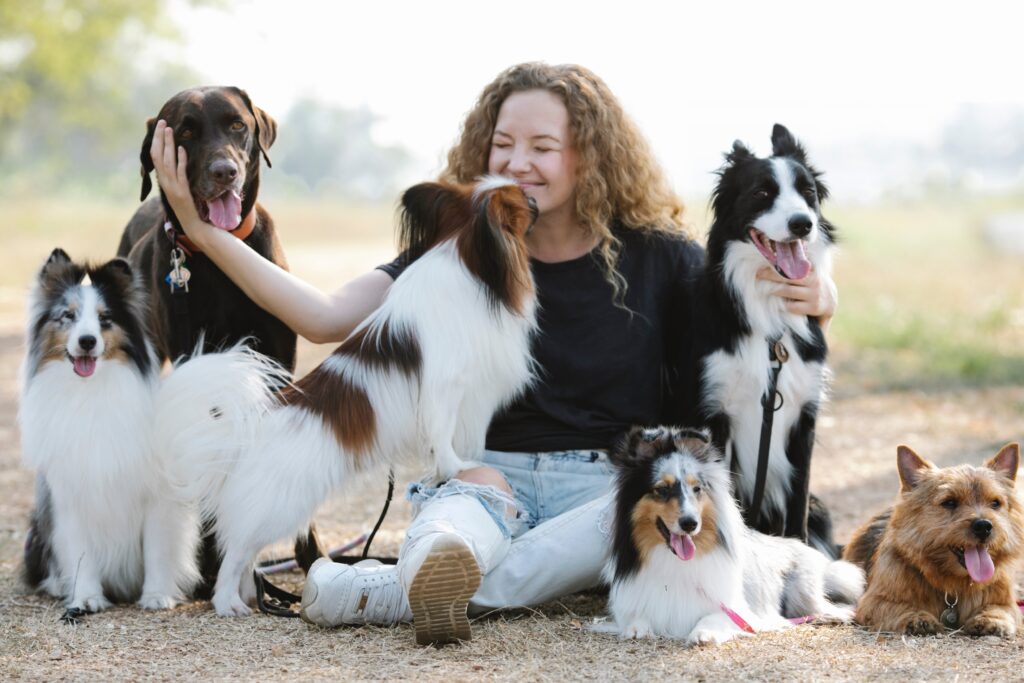Choosing the perfect canine companion for your family can be a daunting task. With so many breeds to choose from, it can be overwhelming to decide which one is the best fit for you and your family. To help make the process easier, we’ve compiled a list of the best dog breeds for families. We’ll look at the temperament, size, and activity level of each breed, so you can make an informed decision when selecting the perfect canine companion for your family.
A Guide to Selecting the Best Dog Breeds for Your Family: What to Look For
When selecting the best dog breed for your family, there are several important considerations to bear in mind. First, it is important to consider the size of the breed. Large breeds may not be suitable for families with small children due to the possibility of accidental injury. Additionally, some breeds may require a great deal of exercise and space, making them unsuitable for families with limited time and resources.
Second, it is essential to research the typical temperament and personality of the specific breed you are considering. Some breeds may be more prone to barking and require a great deal of attention and training, while others may be more laid back and content with less interaction. Additionally, it is important to be aware of possible health issues that may be associated with certain breeds.
Third, it is wise to think about the age of your family members. Some breeds are better suited for families with older children, while others may be more tolerant of younger children. It is important to keep in mind that puppies require a great deal of time and attention, and may not be the best choice for families with small children.
Finally, it is important to consider the lifestyle of your family. Some breeds may require more time outdoors and more exercise than other breeds. Moreover, certain breeds may necessitate greater grooming than others. It is important to think about the amount of time and resources you are willing to dedicate to caring for your pet before selecting a breed.
By considering the size of the breed, the temperament and personality of the breed, the age of your family members, and the lifestyle of your family, you can make an informed decision about which breed is best suited to your household. With the right breed, you can look forward to many years of companionship and joy.

What Size of Best Dog Breeds are Great for Families With Kids?
When selecting a family dog, it is important to consider the size of the breed. Large breeds can be difficult for a family with children to manage and may be too overwhelming for small children. Small breeds, on the other hand, may be too fragile and may not be able to handle rough play.
The best size for a family pet is considered to be medium-sized. Medium-sized breeds are strong enough to handle rough play but not so large that they may be intimidating. These breeds also tend to have an even temperament, making them good companions for children.
Popular medium-sized breeds that make good family pets include the Golden Retriever, Labrador Retriever, Beagle, and Bulldog. These breeds are intelligent, loyal, and eager to please. They are also generally gentle and patient, making them ideal for households with children.
When selecting a breed, it is important to do research to ensure that the breed is a good fit for your family. It is also important to socialize your pet early on to ensure it is comfortable around children and other people. With the proper care, a medium-sized breed can be the perfect addition to your family.
The Pros and Cons of Different Dog Breeds: Picking the Right Dog For Your Family
When it comes to selecting the right dog breed for your family, there are a variety of factors to consider. From size and energy level to coat length and temperament, there is no one-size-fits-all when it comes to pet ownership. In order to make the most informed decision, it is important to weigh the pros and cons of different dog breeds in order to find the right fit for your family.
For instance, small breeds such as Chihuahuas and Shih Tzus can make great companions for active households. These breeds require minimal exercise, have minimal shedding and have generally good temperaments. On the other hand, these breeds can be quite vocal and may require more effort in training and socialization than larger breeds.
In contrast, breeds like Labrador Retrievers and Golden Retrievers make excellent family pets. These breeds are known for their loyalty, intelligence, and easy-going personalities. They are also relatively easy to train and are usually content with moderate levels of exercise. The downside is that these breeds require frequent coat maintenance and shedding can be a problem in the home.
For those looking for a low-maintenance pet, hypoallergenic breeds like Poodles and Bichon Frise may be the right choice. These breeds are known for their calm personalities and minimal shedding. However, they may require more grooming than other breeds and may not be suited for owner’s who are away from home frequently.
No matter what breed of dog you choose, it is important to remember that all dogs require love and attention. By researching the pros and cons of different dog breeds, you can be sure to find the right fit for your family.

How to Choose the Right Temperament for Your Family: Understanding Dog Behavior
The process of choosing the right temperament for your family pet can be daunting and overwhelming. It is important to understand the basics of canine behavior and temperament before making any decisions. By examining the animal’s physical and mental characteristics, you can better determine which type of dog would be the most suitable for your family.
First and foremost, it is important to consider the size and activity level of a dog before deciding on its temperament. Larger dogs, such as German Shepherds, may require more space and exercise than smaller breeds, such as Chihuahuas. Additionally, larger breeds are more likely to have a protective instinct and require more training. However, smaller breeds may be more prone to separation anxiety and require more attention and socialization.
When considering a temperament for a family pet, it is important to think about the individual needs of your family. Are there children in the home? If so, it is important to select a breed with a gentle disposition and a tolerant nature. On the other hand, if your family is looking for a guard dog, a breed such as a Rottweiler or a Doberman Pinscher may be more appropriate.
It is also important to consider the environment in which the dog will be living. Dogs that live in apartments or smaller spaces may require a breed with a calmer, more relaxed temperament. Alternatively, dogs that live in larger homes with yards may require a breed with more energy and a more active disposition.
Finally, it is important to research the breed and temperament of the dog before making a decision. Many breeds have distinct personalities and characteristics that may or may not fit with your family. Be sure to read up on the breed and consult with a veterinarian or a professional breeder to better understand its temperament and needs.
Choosing the right temperament for your family pet takes time and research. By considering your family’s needs, the environment in which the dog will be living, and the breed’s characteristics, you can make an informed decision that will benefit both you and your pet.

Training Tips for Families With Dogs: Establishing Clear Boundaries and Guidelines
Establishing clear boundaries and guidelines is essential for families with dogs. Dogs thrive in environments where they understand the expectations and rules they must follow, and establishing these guidelines can help to ensure a happy and healthy relationship between family members and their canine companion. Here are some tips for setting boundaries and guidelines for a family with a dog:
- Establish a consistent routine. Dogs need structure and consistency in order to understand their place within the family. Establishing a schedule for feeding, exercise, and playtime helps to further reinforce the boundaries and guidelines that have been set.
- Provide consistent rewards and consequences. Dogs respond best to consistent rewards for desirable behavior and consistent consequences for undesirable behavior. It is important to establish which behaviors are acceptable and which are not and to reward the dog for following the rules.
- Teach basic commands. Teaching basic commands such as sit, stay, come, and down can help to reinforce boundaries and guidelines and give the dog a sense of security.
- Be consistent. It is important to be consistent with the commands, rewards, and consequences that you give to the dog in order to ensure that the boundaries and guidelines are clear.
By following these tips, families with dogs can establish clear boundaries and guidelines that will provide the dog with a safe and secure environment. This will help to create a positive and lasting relationship between family members and their canine companion.
Conclusion
In conclusion, there is no one-size-fits-all answer to finding the best dog breed for families. The best dog breed is the one that best suits the lifestyle of the family, but also the individual needs and preferences of each family member. Each breed has its own unique traits, so it’s important to research different breeds to determine which one is the best fit for your family. With patience and care, any breed can become a loving and loyal companion for years to come.




